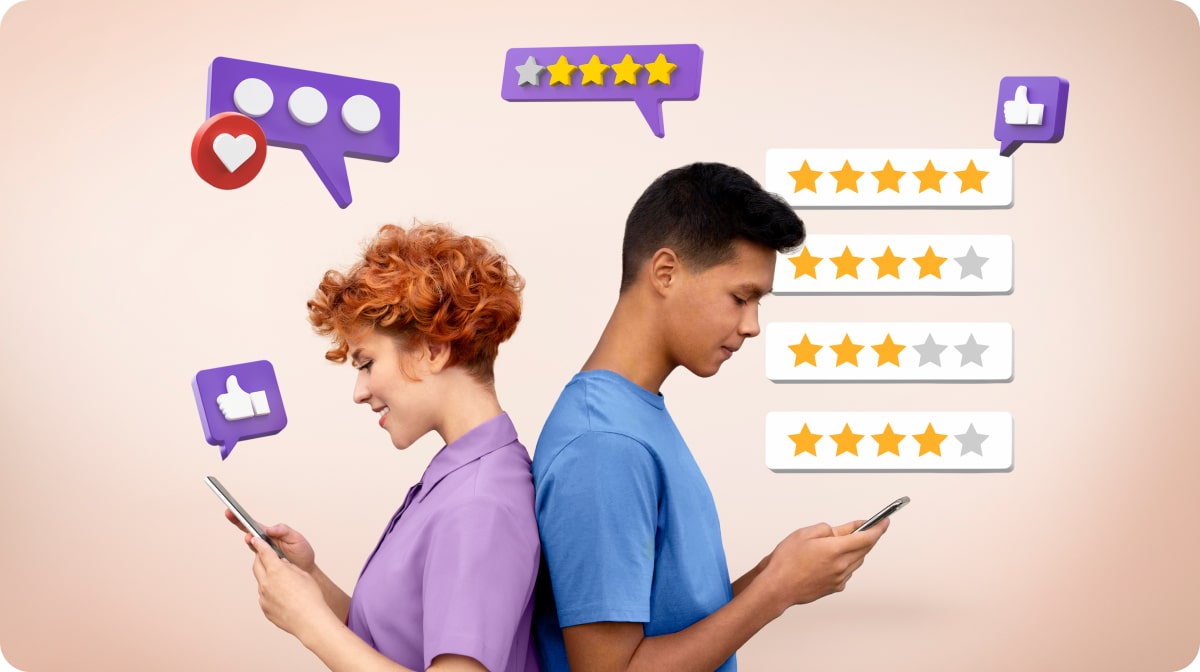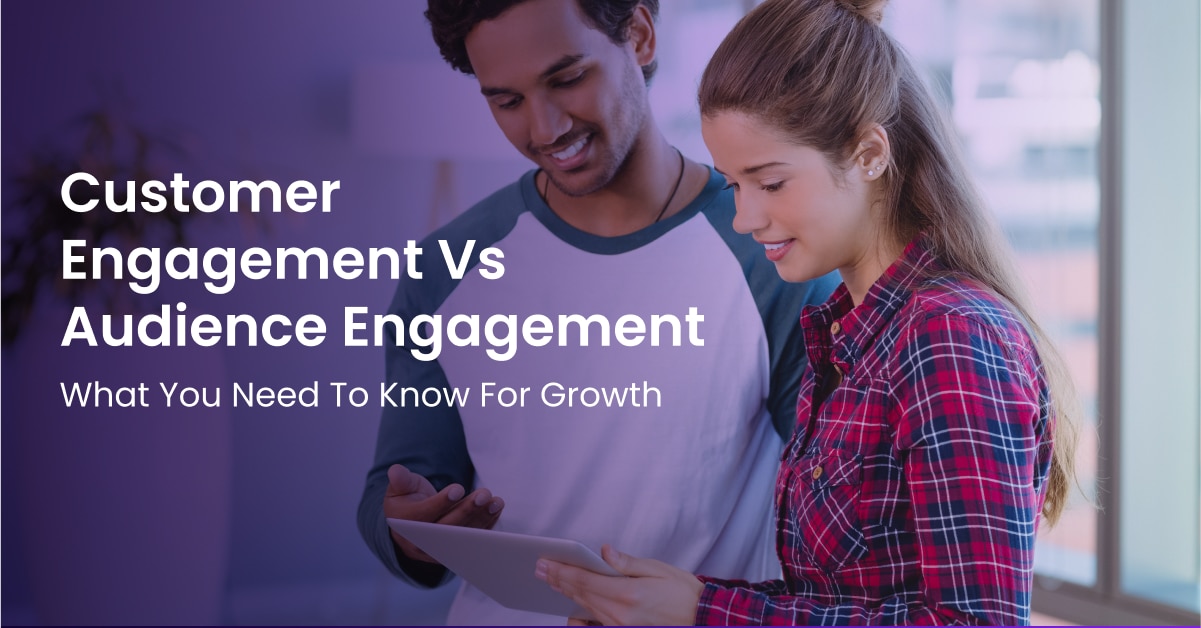The customer engagement vs. audience engagement debate is growing. The reality is that most businesses need to grow their audience and customer base. The strategic choice is to decide how to cover types of engagement and allocate your resources appropriately.
What Is Audience Engagement?
From a marketing perspective, audience engagement refers to people who have interacted with your online presence in some depth. Think about an audience at a concert – you’re only part of the audience if you see most (if not all) of the performance. Likewise, your online audience excludes people who bounce or visit your website once and never return.
Audience engagement is the art and science of drawing website visitors to consume multiple pages or content assets. Ideally, audience engagement also has a social aspect. Again, think of attending a performance. You might go to an event with a friend and have the chance to meet other people who share similar interests.
Translating audience growth to revenue depends on your business. Publishers earn more from audience engagement right away because a more engaged audience views more ads. Other businesses are more likely to get more leads and conversions from a high audience engagement.
Engaging your customer base overlaps with audience engagement, but there are also some key differences.
What Is Customer Engagement?

Customer engagement is focused on building a deeper relationship with your customers. This might include using a loyalty program to encourage more purchases. In addition, customer engagement also includes gathering first-party data from your customers. For example, you may use data to better understand the content, pages, and online experiences that customers experience before making a purchase.
Since customer engagement focuses on people who have bought before, it is closer to revenue. After all, a customer has already taken the leap of trust to buy once. If they’ve had a good experience, inviting them to buy again is easier.
The challenge with customer engagement is balancing maximizing revenue and enriching the relationship. If your customers only hear from you during a sale, some may tune out. Alternatively, brands that show appreciation for customers through events, sharing content, and seeking feedback are more likely to build a trusting relationship.
Assessing Your Need For Audience Engagement And Customer Engagement
Most companies need audience engagement and customer engagement strategies to achieve their growth objectives. Audience engagement helps to replenish the top of the marketing funnel (and grow advertising revenue for publishers). Customer engagement gives you the tools to develop loyal customers for the long term.
To decide which mix of audience engagement vs. customer engagement to pursue, take a moment to assess your current situation with the following maturity self-assessment.
Audience Engagement Maturity
Reflect on these audience engagement questions to determine your strengths and weaknesses in audience engagement.
1) Do you have audience engagement growth metrics established?
2) Are you gathering more first-party data directly from your audience month over month?
3) Does your website offer community experiences like online events regularly?
4) Are you communicating with other stakeholders regularly to demonstrate the value of audience engagement?
5) Do you have audience engagement solutions like Arena Live Chat and Live Blog available?
If you answered yes to most of the questions, you have a highly engaged audience. In that case, shifting your focus to customer engagement is wise. On the other hand, if you answered no or weren’t sure about the questions, audience engagement should probably be your primary focus.
Customer Engagement Maturity
Assessing your customer engagement maturity starts with exploring the following questions with your team.
1) Do you have a customer loyalty program that rewards engagement and purchases in some way?
2) Do you know your customers better today than you did a year ago regarding data?
3) Do you regularly tell your customers that you appreciate their business?
4) Do you provide special experiences (e.g., early access, discounts, online experiences) just for your customers?
5) Do you have a customer data platform (i.e., CDP) in place to organize all of your first-party data?
The maturity level for customer engagement is similar to the audience engagement outlined above. If you answered yes to three or more of the questions, you have a high level of customer engagement maturity. If you were unsure of your answers or had two or fewer yes answers, your customer engagement maturity has significant room for improvement.
How To Use Online Experiences To Grow Engagement
We have some good news: Whether you see greater audience engagement or customer engagement opportunities. With some tweaks, you can use similar tools and strategies to lift both kinds of engagement. Let’s consider two scenarios: increasing audience engagement and lifting customer engagement using online events.
Boosting Audience Engagement Strategies
You must offer something new and attractive when your audience is not large or engaged enough. The harsh reality is that your audience members have many other online options for connection, learning, and entertainment. The following ideas can help you to lift engagement.
Partner With Influencers In An Online Event
Influencers are celebrities for a specific niche or interest. Since influencers spend their time growing their audience, they have the know-how to help you. Depending on the size of your audience and resources, you can offer different forms of payment to an influencer to run an event with you. Add Arena Live Chat to your event so your audience can easily ask questions and connect with other participants.
Leverage Breaking News
Breaking news events offer a potential shortcut to growing your audience quickly with Arena Live Blog. If you can be the first to offer coverage or offer something uniquely different than others, you can stand out. For example, consider Nate Silver’s election coverage. His approach to offering a data driven approach to election coverage and politics helped him to build an audience.
Lifting Customer Engagement Strategies
Growing customer engagement through online experiences is different in terms of focus. Instead of throwing the doors wide open, customer engagement works best when focused. Here are some examples to get you started.
Customer Appreciation Experiences
Many companies organize an annual customer conference. However, running a full-scale live event may not suit your goals or budget. Instead, an online event focused on customer appreciation can work even better. For example, a B2B company may have many ecommerce customers. Consider inviting a small group of ecommerce company owners to an exclusive “fireside chat” where they can network with each other and meet an engaging guest speaker.
Early Product Feedback Events
Another approach is to invite your customers into the product development process. When you have a prototype product ready, invite VIP customers to see it. Let your customers use the beta product for free. They’ll feel appreciated by giving them early access and acting on their feedback. You’ll receive helpful comments that can also help you launch the product.
Reach Your Engagement Goals With Arena
Whether you want a larger audience or more excited customers, investing in engagement can help. Use Arena Live Chat and Live Blog to offer interactive online experiences directly through your website. Build your community right on your website with Arena!



